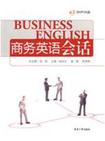商务英语会话
出版时间:2010-1 出版社:东华大学出版社 作者:高翔 编 页数:331
前言
近年来,我国对外开放的力度日益扩大,商务活动更加频繁,商务英语进入了一个全新发展的阶段。商务英语不仅是我国目前从事或即将从事涉外商务人员的有效工具,而且也是他们在这个经济全球化时代中竞争能力和业务素质的重要体现。尤其在中国加入WT0之后,竞争围绕着经济、金融和贸易激烈地展开,而这些领域里的商务活动大多是以英语作为交际语言来进行的。因此,我国对既懂国际经贸知识,又熟练掌握商务英语的人才需求越来越大,培养和造就一大批这类人才已成为当务之急。 正是在这种形势下,我们编写了《商务英语会话》一书,希望能够帮助那些有志在商务方面大显身手的读者在短时间内迅速有效地提高商务英语水平。本书共分4个部分:“商务生活”、“商务交流”、“商务实务”和“其他商务环节”;每个部分由16至19个单元组成;每个单元包括“常用句型”、“情景对话”和“重要词语”三部分内容。全书通过70个经典会话场景反映出各种商务活动中语境真实、对话生动、语言地道的特点。本书收集的常用句型和重要词语都与所列举的各种商务场景有关,实用、地道、出现率高,便于读者熟悉掌握,有利于读者在提高英语水平的同时,丰富自己的商务知识。 本书体现了如下特点:情景真实、对话生动,用法地道、语言规范,琅琅上口、实用性强,涵盖面广、重复率高,举一反三、一语多说,通俗易懂、知识性强。我们真诚希望此书能成为读者在商务领域成才的好帮手。
内容概要
《商务英语会话》共分4个部分:“商务生活”、“商务交流”、“商务实务”和“其他商务环节”;每个部分由16至19个单元组成;每个单元包括“常用句型”、“情景对话”和“重要词语”三部分内容。全书通过70个经典会话场景反映出各种商务活动中语境真实、对话生动、语言地道的特点。《商务英语会话》收集的常用句型和重要词语都与所列举的各种商务场景有关,实用、地道、出现率高,便于读者熟悉掌握,有利于读者在提高英语水平的同时,丰富自己的商务知识。
书籍目录
PartⅠ B Usiness Life商务生活Unit 1 On a B Usiness Trip(出差)Unit 2 Reserving a Room(预订房间)Unit 3 Crossing the Border(过边境)Unit 4 At the C Ustoms(过海关)Unit 5 Meeting at the Airport(接机)Unit 6 Making an Introd Uction(彼此介绍)Unit 7 Taking a Taxi(打车)Unit 8 Traveling by B Us and S Ubway(乘坐公共汽车和地铁)Unit 9 B Usiness Reception(商务接待)Unit 10 Conference Arrangement(安排会议)Unit 11 Making Sched Ules(日程安排)Unit 12 Changing Plans(改变计划)Unit 13 In the Resta Urant(在餐厅)Unit 14 Entertainment(娱乐)Unit 15 Shopping(购物)Unit 16 Sightseeing(观光旅游)Unit 17 Check-o Ut(退房)Unit 18 Parting(离别)PartⅡ B Usiness Comm Unications商务交流Unit 1 B Usiness Plan(商务计划)Unit 2 B Usiness Letters(商务信函)Unit 3 E-mail(电子邮件)Unit 4 B Usiness Phone Call(打电话)Unit 5 Invitation(邀请客人)Unit 6 Visiting a Factory(参观工厂)Unit 7 Exec Uting Meetings(开会)Unit 8 Small Talk(聊天)Unit 9 Talking abo Ut the Job(谈论工作)Unit 10 Comments on the Boss(评价老板)Unit 11 Trade Fair(商品交易会)Unit 12 Press Release(新闻发布)Unit 13 Company Profile(公司介绍)Unit 14 Corporate C Ult Ure(公司文化)Unit 15 Recommendation(产品推荐)Unit 16 Trade Forms(贸易形式)PartⅢ B Usiness Practice商务实务Unit 1 Establishing B Usiness Relations(建立业务关系)Unit 2 Inq Uiry(询盘)Unit 3 Offer(报盘)Unit 4 Co Unter-offer(还盘)Unit 5 Price Negotiation(磋商价格)Unit 6 Disco Unts and Commissions(折扣和佣金)Unit 7 Terms of Payment(付款方式)Unit 8 Packaging(包装)Unit 9 Ins Urance(保险)Unit 10 Order(订购)Unit 11 Signing a Contract(签订合同)Unit 12 Shipment(装运)Unit 13 Delivery(交货)Unit 14 Commodity Inspection(商品检验)Unit 15 Ret Urning the Goods(退货)Unit 16 Claims(索赔)Unit 17 Settling Complaints(处理投诉)PartⅣ Other B Usiness Sectors其他商务环节Unit 1 Advertising(广告)Unit 2 Patent and Trademark(专利和商标)Unit 3 Job Interviews(面试)Unit 4 Training(培训)Unit 5 Paying Taxes(缴税)Unit 6 B Udget(预算)Unit 7 A Uditing(审计)Unit 8 Q Uality Control(质量控制)Unit 9 B Usiness Environment(商务环境)Unit 10 Market Research(市场调查)Unit 11 Sole Agent(独家代理)Unit 12 E-b Usiness(电子商务)Unit 13 After-sale Services(售后服务)Unit 14 Banking B Usiness(银行业务)Unit 15 Tendering and Bidding(招标与投标)Unit 16 Technology Transfer and Cooperation(技术转让与技术合作)Unit 17 Merger and Acq Uisition(并购)Unit 18 Financing and F Undraising(融资和集资)Unit 19 Joint Vent Ure(合资企业)References参考文献
章节摘录
B: That means Beijing opera did not originate in Beijing. A: No. But it got its recognition and development in Beijing. B: Oh, I see. A: It is a unique performing art that integrates singing, dialogue, acting and acrobatics. The characters of Beijingopera are divided into four groups. They are Sheng, Dan, Jing, and Chou. B: What do all the characters mean respectively? A: Sheng is the male role. Dan is the female role. Jing is the painted face and Chou is the clown. Their costume and make-up make you easily tell them. The patterns and colors on their "painted" faces show different symbolic meanings. B: Can you give me some examples? A: For example, if red is the main color of the face, it stands for loyalty, blue for cruelty, yellow for cunning, and white for treachery. B: It sounds interesting. A: What is more interesting about Beijing opera is that there used to be no fe-male performers in the past and all the roles were played by males. Ofcourse, now things have changed, and there are both male and female per-formers in Beijing opera. B: Would you please tell me something about Beijing operas themes? A: OK. The themes of Beijing opera mainly come from historical events, fic-tional tales, folk stories and classical literature. And many modern ones deal with the present reality. B: It seems to me that Beijing opera is a colorful and diverse art. A: Yes, it is. So youd better enjoy more of Beijing opera later. B: I will. Thank you very much.
图书封面
评论、评分、阅读与下载
用户评论 (总计0条)
相关图书
- 大学英语考试8300单词速记
- 英语中高级口译考试词解
- 现代英语常用词汇同近义词解析
- 法语词汇揭秘
- 农村家电使用知识有问必答
- 大学英语4级考试单词快速巧记
- 农村安全用电与节约用电有问必答
- Photoshop CS4平面设计宝典
- 大学英语4.6级词汇巧记速记
- 大学英语4级词汇巧记速记
- Illustrator CS4插画设计宝典
- 大学英语4级考试单词速记
- CorelDRAW X4平面设计宝典
- AutoCAD 2009辅助设计绘图宝典
- 英语专业4级考试词汇必备
- 心理学原理
- 大学英语四六级考试单词快速巧记
- 大学英语四六级考试单词速记
- 有一种口才叫幽默
- 滚雪球
- 苏东坡
- 菜根谭
- 孙子兵法三十六计全集
- 胡雪岩
- 从合格到卓越
